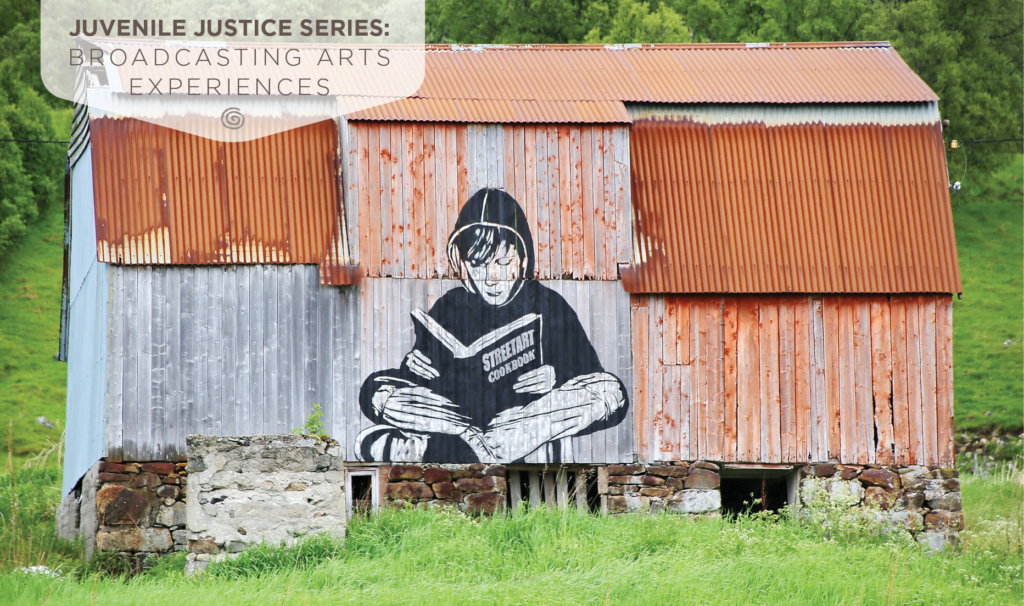Impact Stories to Inform Arts Learning Practices

This photo is taken outdoors in the Norwegian countryside and is a landscape-style image. The photographer chose to focus on a large, partially rusted tin barn. On the front of the barn and centered in the photograph, a street artist painted a mural of a young person in a seated position. The mural subject is wearing a black hoodie and reading a book titled “Street Art Cookbook.” The photo’s foreground is bright green pasture, and the background of the photo includes a wall of bright green trees. Photo by Mark König on Unsplash
AEP is excited to launch the Juvenile Justice Series: Broadcasting Arts Experiences this month. Each blog post in the series will focus on arts learning impact stories from youth in the care of juvenile justice facilities or those directly providing services to youth.
This series is the next step in our work that explores the role of the arts in the juvenile justice system. In 2019, AEP began researching and sharing our learning on arts education in juvenile justice settings. During this time, we learned that sharing arts experiences that influence youth while learning in juvenile justice facilities can play a critical role in understanding effective and sustainable arts learning experiences.
A well-designed arts program can directly affect youth and their families, the artists working with youth, and facility administration and staff. Capturing and sharing impact stories with different audiences gives a voice to youth by sharing the needs and successes related to supportive arts programs. The information gathered from these narratives can complement data assessments that inform decisions on enhancing youth development.
For this series, we ask contributors to reflect on actionable takeaways that programs or facilities could implement to support arts learning experiences, as well as lessons for readers to consider in their roles in a professional or personal capacity with arts learning engagement in juvenile justice spaces. To highlight connections in this work, each contributor responded to similar questions to help us learn what led them to engage in arts learning experiences in juvenile justice settings, how they built and leveraged relationships for deeper impact, what barriers to success they experienced, and how they worked around barriers or changes to accomplish their work.
From centering youth as contributors to including guest writers who directly support youth in the care of juvenile justice facilities, this series emphasizes that lived experiences can provide unique insight about learning in unstable or uncertain circumstances, whether it is due to a viral pandemic or transitioning learning institutions. These narrative-driven posts are valuable additions to this focus area because stories center the people who are influenced by policy decisions in ways that data alone cannot.
As you follow the series, we ask that you reflect on your individual role in this work and consider the following questions:
- What alignment do I notice with these shared experiences in my work?
- How can these practices transfer to my current or upcoming work or a peer’s work?
- If I am doing work in this space, what contribution could I add to this series? If I am not, then do I have someone in my network who could contribute?
Our first guest writer, Parker Nelson, is a horn artist and educator from Fifth House Ensemble. His upcoming post will share data used to support and sustain his organization’s programming. He will also explore the stakeholders involved to create meaningful partnerships and the challenges that sparked innovations and adaptions.
If you’re interested in sharing your arts education experience in juvenile justice settings for a future blog post, let’s connect! You can reach me here.
This is the first post in the multi-part Juvenile Justice Series: Broadcasting Arts Experiences. AEP hopes these story-driven contributions will expand thoughtful discussion and research into the role of the arts in the juvenile justice system.



